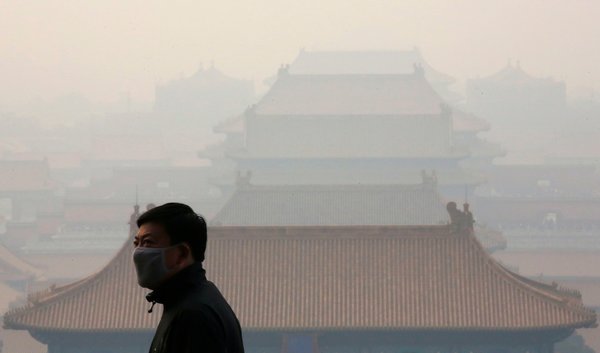《Science》报道鄱阳湖大坝修建对湿地保护的消极影响
时间:2009-10-24 阅读: 我要评论:
《Science》报道鄱阳湖大坝修建对湿地保护的消极影响
10月23日出版的美国《Science》(《科学》)杂志报道了江西拟建的鄱阳湖大坝可能对鄱阳湖湿地产生的消极影响。
原文如下:
Scientists Line Up Against Dam That Would Alter Protected Wetlands
XINGZI COUNTY, CHINA—In an annual rite of autumn and winter, millions of migratory birds, including endangered white cranes, descend on Poyang Lake, China's largest body of fresh water. But the vital wintering grounds may be at risk. A proposed dam across Poyang's northern end, 27 kilometers from the Yangtze River, would destroy delicate habitat and impede rare Yangtze finless porpoises from reaching spawning areas, scientists argue. The ecosystem "would change fundamentally," says wetland ecologist Chen Kelin, director of Wetlands International-China.
In an 11th-hour bid to derail the dam, Chen and other scientists outlined their concerns in two letters this past summer to China's premier, Wen Jiabao, chair of the State Council. Their appeal seemed to fall short: On a visit here late last month, Chinese Vice-Premier Li Keqiang endorsed the project's basic direction while stipulating that "the dam needs further scientific input" and that it must protect Poyang's ecology.
But in a surprising development, the State Council ordered critics and the dam's backers—the Jiangxi Province government—to thrash out their differences in Beijing. At the meeting last week, scientists argued that the present proposal's costs outweigh its benefits and pressed Jiangxi officials, led by Hu Zhenpeng, the province's vice governor from 1999 to 2008, to shelve plans for the dam, pending further research. "Until now, the project of Jiangxi government is far from being demonstrated as necessary," says Li Wenhua, an ecologist at the Institute of Geographical Sciences and Natural Resources Research (IGSNRR) of the Chinese Academy of Sciences in Beijing. "The government should organize scientists of different research fields to study the project and judge whether to build the dam," adds IGSNRR geographer Sun Honglie. "Balancing ecology and development is necessary."
Poyang is more and more precious, Li says, because many wetlands of the Yangtze River basin are gone. In recent decades, wetlands in the middle and lower Yangtze, upstream of Poyang, "have been seriously degraded" as developers fill them in, says ecologist Lei Guangchun, dean of the nature conservation school at Beijing Forest University. That makes the relatively undeveloped Poyang more critical to preserving ecosystem function, he says.
A section of Poyang is one of seven wetlands that China first protected under the international Ramsar Convention in 1992. One iconic winter resident is the white crane: The 4000 or so individuals that flock here account for 95% of the remaining population, says Zhang Zhengwang, a professor at Beijing Normal University and secretary general of the China Ornithological Society. The big draw for cranes and other migratory birds are Poyang's shallow waters and marshes, ideal for wading and spearing fish with bills.
Proponents argue that a dam would even out Poyang's water fluctuations, which have grown wilder in recent years. During the summer monsoon season, the Poyang watershed, covering 162,200 square kilometers, serves as a spillway for the Yangtze. Lake waters retreat in autumn and winter, and in recent years—perhaps because of the massive Three Gorges Dam upstream—sections have dried up altogether, causing huge losses for fisheries.
Convinced of the economic benefit of stabilizing lake levels, Jiangxi's government in March 2008 aired plans for a dam about 2.8 kilometers long that would keep Poyang flush in winter, when lake water typically drains into the Yangtze. Sluices would remain open from April to October, when the water level is higher, allowing free passage to the Yangtze for fish and porpoises, Hu says. A dam, he and others argue, would both improve water quality and safeguard bird habitat.
Many scientists disagree. "Based on our own research and other available data, [we] concluded that the proposed water-control structure at the outlet to Poyang Lake would have a significant, negative impact on cranes and other wintering water birds," says James T. Harris, vice president of the International Crane Foundation in Baraboo, Wisconsin. Stabilizing lake levels would mean that in winter, "almost all" migratory bird habitat would be lost, Harris says. "The water would be too deep for the birds to access food," he says. "The change in winter water depths would dramatically impact large populations of rare water birds and might lead to the extinction of the Siberian Crane," adds Jeb Barzen, field ecology director at the International Crane Foundation.
In a letter to Wen last June, Chen Kelin and 26 other scientists warned that a dam would "deeply damage" Poyang's ecology and wetland biodiversity. Then in September, 15 senior scientists sent a second letter arguing that stabilizing Poyang's water levels "will trigger a fundamental change of wetland vegetation" and disrupt the food chain.
In a March 2009 letter to China's foreign affairs minister, Yang Jiechi, the Ramsar Convention's secretariat reminded that treaty parties are required to "maintain the ecological character of all designated Ramsar sites." The secretariat, based in Gland, Switzerland, wondered whether the dam would reduce Poyang's water quality and lead to algal blooms, and whether an increased sedimentation rate would erode Poyang's flood storage capacity. "We are concerned as much with the health and livelihood of the human communities that depend on the wetlands, as with ensuring that the function and values of the wetland is maintained for future generations," the secretariat said in a statement to Science.
Dam backers argue that such concerns are overblown. The Ramsar-protected wetlands cover only 224 square kilometers, or 5% of Poyang's area, says Sun Xiaoshan, director of Jiangxi's Water Resources Department. "We will protect these wetlands," he says. Hu adds that it doesn't make sense to allow vast areas of Poyang to dry out in winter and says further research is needed to determine the lake's appropriate level and how best to operate the dam. He acknowledges that a dam will reduce flow rates into Poyang and increase eutrophication risk—but this is a problem that managers "can guard against."
Based on the discussions at the meeting, some scientists say the case against a dam is watertight. Others are not sure. "The dam must meet strict environmental criteria," says Xia Qing, an ecologist of the Chinese Research Academy of Environmental Sciences in Beijing. He and others hope that Jiangxi officials at least apply the brakes and involve outside experts in assessing Poyang's future. Adds Chen Zhikai of the China Institute of Water Resources and Hydropower Research in Beijing, "Nobody can evaluate the dam without further research."
| 《Nature》:中瑞合作研究确定二次气溶胶是中国雾霾的主要污染物 |
| 《Nature》:气候变化影响南极海狗生存 |
| 《PNAS》:人造叶片电池实现光合作用 |
| 《Science》:首份21世纪全球森林变化图 |
| 《Nature》:北京大学朴世龙等人解析昼夜变暖对北半球植被生产力的影响 |
| 2013年11月07日《Nature》杂志精选导读 |
特别声明:本文转载仅仅是出于传播信息的需要,版权归原作者所有,并不意味着代表本网站观点或证实其内容的真实性; 如其他媒体、网站或个人从本网站转载使用,须保留本网站注明的“来源”,并自负版权等法律责任; 作者如果不希望被转载或者联系转载稿费等事宜,请与我们接洽:service#environmentor.cn(请将#改为@)。
来源: 作者: (环境人 Environmentor.Cn)





